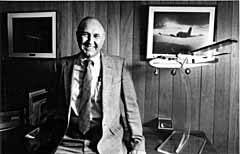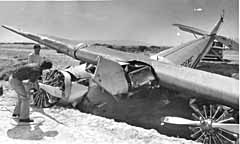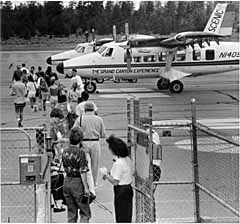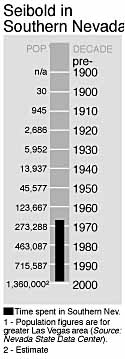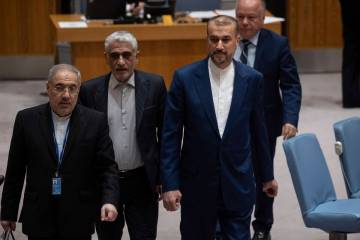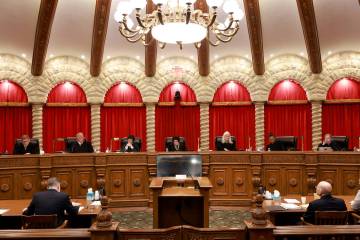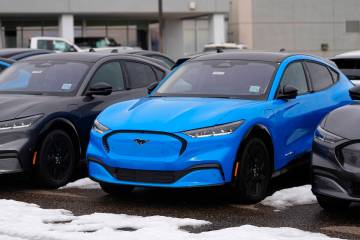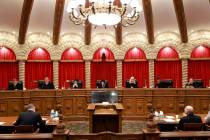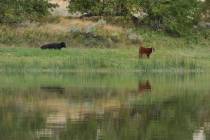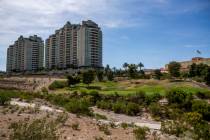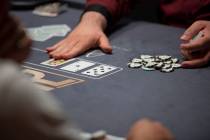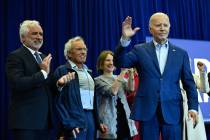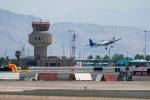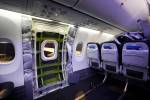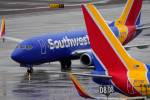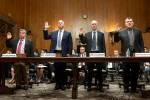John Seibold
On one side of the hangar sits a wingless airplane fuselage. It has no interior or motors and, to the untrained eye, not much of a future.
But to John Seibold, it's a new baby, waiting to be born, the latest addition to his family of DeHavilland Twin Otters, the plane upon which his fortune was built.
Seibold is the founder of the modern Scenic Airlines. An aeronautical engineer, he also invented the Twin Otter "Vistaliner," an Otter with oversized windows, designed specifically for sightseeing.
Today, Seibold is the part-time vice president of operations for Twin Otter Leasing International, which leases and services the sturdy little planes all over the world.
"This one crashed in the Antarctic," he says, gesturing at the Otter-in-progress. "It belonged to the government of Chile, and we had some long negotiations to get the salvage rights. We'll buy just about anything that's conceivably repairable and repair it, and when it comes out of our shop, it's like a brand new airplane."
DeHavilland stopped making the Twin Otter in 1988 after turning out about 600 of them. But demand for the planes continues.
"There's nearly that many still flying," says Seibold. The reason? The Otter, built in Canada, is a short-takeoff airplane perfectly suited for landing and taking off on crude, backwoods airstrips, even at very high elevations.
"We have a couple leased to the Drug Enforcement Administration," he says. "They needed them for some work they were doing in South America; Bolivia, I think." They also are rigged with floats and leased to tour operators in Alaska, where they wend tourists through the misty fjords near Ketchikan. In the Fiji Islands, they are the choice of the local commuter airline.
"They didn't really need the big windows, but the country they were flying over was so spectacular that they really enjoyed them," says Seibold.
Most of his customers, however, are his former competitors in the local Grand Canyon air touring business.
Seibold was among the thousands of young scientists and technicians drawn to Southern Nevada in the 1950s and 1960s to work at the Nevada Test Site.
Born in New Jersey, Seibold moved to Southern California with his parents at age 16, he recalled in a 1988 interview. At 18, he earned his private pilot's wings. Instead of going directly to college after high school, he enrolled in an airframe and powerplant school -- a type of trade school that produces aircraft mechanics. But Seibold wasn't especially interested in being a wrench-bender, or even a professional pilot.
"I was more interested in the machinery than I was in operating the airplane," he said, "My interest was more from the engineering standpoint. That was mainly so I could work on and maintain my own airplane."
In other words, airplanes and flying were his hobby. His actual career, he thought, would be in a new and booming field.
"At that time, nuclear engineering was the thing." he said. "It was the forefront of technology, and that's where the jobs were."
In particular, Nevada was the place where the jobs were. After graduating from the California Polytechnical Institute in 1959 with a dual major in aeronautical engineering and physics, he worked for several California firms doing contract work at the Nevada Test Site.
At first, he maintained his home in San Diego, as did many of his colleagues at the test site.
"We would gather a group together and fly down to San Diego on Friday night, then come back again on Monday morning," Seibold recalled. "In the course of doing that, I found out what it cost to operate an aircraft on a regular basis."
Mostly for fun, Seibold occasionally flew charters out of the North Las Vegas Airport for a small firm named Scenic Airlines. It was one of many tiny charter outfits offering air tours.
"There was one time when I think we had about 40 competitors working out of Las Vegas," said Seibold. "Everybody that had an airplane and a private pilot's license was in the Grand Canyon air tour business."
In 1967, Scenic Airlines folded.
"They owed me $300, and when they bellied up, I said, `Forget about the $300, just give me your old reservations and whatever brochures you have and we'll call it even.' "
He observed that most of his customers were not from California, the city's main market then and now.
"The majority of our customers were from overseas, more than half initially," Seibold said. "When we sold the airline, I think it was close to 85 or 90 percent overseas passengers."
The reason is simple. For domestic visitors, the Grand Canyon is something that can be seen on a return trip. For overseas travelers, it may be their only trip, and the Grand Canyon is a must-see.
"They all want to see the canyon, but they don't want to take a week to do it," said Seibold.
One of the early problems with getting foreign visitors aboard his planes was selling the idea that Las Vegas -- not Phoenix or Flagstaff, Ariz. -- was the logical departure point for tours of the canyon.
In the late 1960s and '70s, Scenic tried to stir up interest among the rest of the Southern Nevada resort industry in the potential of overseas markets.
"At the time we started," recalled Seibold, "the hotel industry in Nevada had absolutely no interest in the international market; they were looking at the Los Angeles crowd. When we tried to talk to them about doing joint promotions and participating in international marketing, their attitude was, `Who needs it?'
"If you look today at what Las Vegas does to generate international business, it's a far cry from what it was in those days. I like to think that Scenic Airlines played an instrumental part in getting the recreation and resort community in Las Vegas to start looking at the international marketplace."
Initially, the tours were conducted in Cessnas and other small craft. When Seibold borrowed a couple of Otters from another airline, he was impressed with the plane's potential. Its wing was atop the fuselage, giving riders in window seats an unobstructed view below. But the aisle seat passenger was out of luck.
"It had very small windows," Seibold recalled. "We had a lot of complaints that when the person sitting next to the window looked out, his head blocked the whole window."
Seibold borrowed an Otter from a friendly company, took it apart, and determined that the windows could be enlarged quite a bit without compromising the plane's structural integrity.
The result was a tool perfectly fitted to the task. So enormous were the windows that passengers could see out both sides of the plane from any seat.
Before selling Scenic to Sky West Airlines in 1993, Seibold purchased an airport at Valle, Ariz., 20 miles south of Grand Canyon National Park, and set about restoring it.
"I was about halfway through with the airport, and we sold Scenic, and I had an airport that was half finished." Seibold says. "So I decided, in my infinite wisdom, to complete it. Of course, I didn't have an airline to support it."
He plans a scaled-down air tour operation there; something more easily managed than his previous enterprise.
"Running an airline is a 24-hour-a-day, seven-day-a-week job," says Seibold. "Scenic was an excellent company, and did very, very well." But, he adds, he's ready to retire, or at least semi-retire. Scenic had 300 employees. Twin Otter Leasing has 25.
The Valle airport also will have an aviation museum, built by the Planes of Fame Air Museum out of Chino, Calif.
Seibold's shop also contains a 1928 Stinson SM-1. It was the first plane purchased new by Parker Van Zandt, who used it for the first sightseeing flights at Grand Canyon in the 1920s. The entire plane is contained in a large cardboard box, a rusty amalgam of non-descript junk.
The museum is intended to be a bit more than another roadside attraction.
"We want to make a very strong statement as far as the value of air tours in the canyon, they have taken such a beating from the environmentalists and the park service," says Seibold. He refers to the ongoing debate between environmentalists, who are concerned that overflights of the canyon are harming its "natural quiet," and air tour operators, who insist that the flights produce minimal noise in a limited area of the park, don't require trails and stay only a few hours.
"You'd think they would be begging us to bring more people over by air," says Seibold. "The bottom line is that these are people who hate airplanes. I happen to love airplanes, and anyone who hates them is my enemy."
Part III: A City In Full



